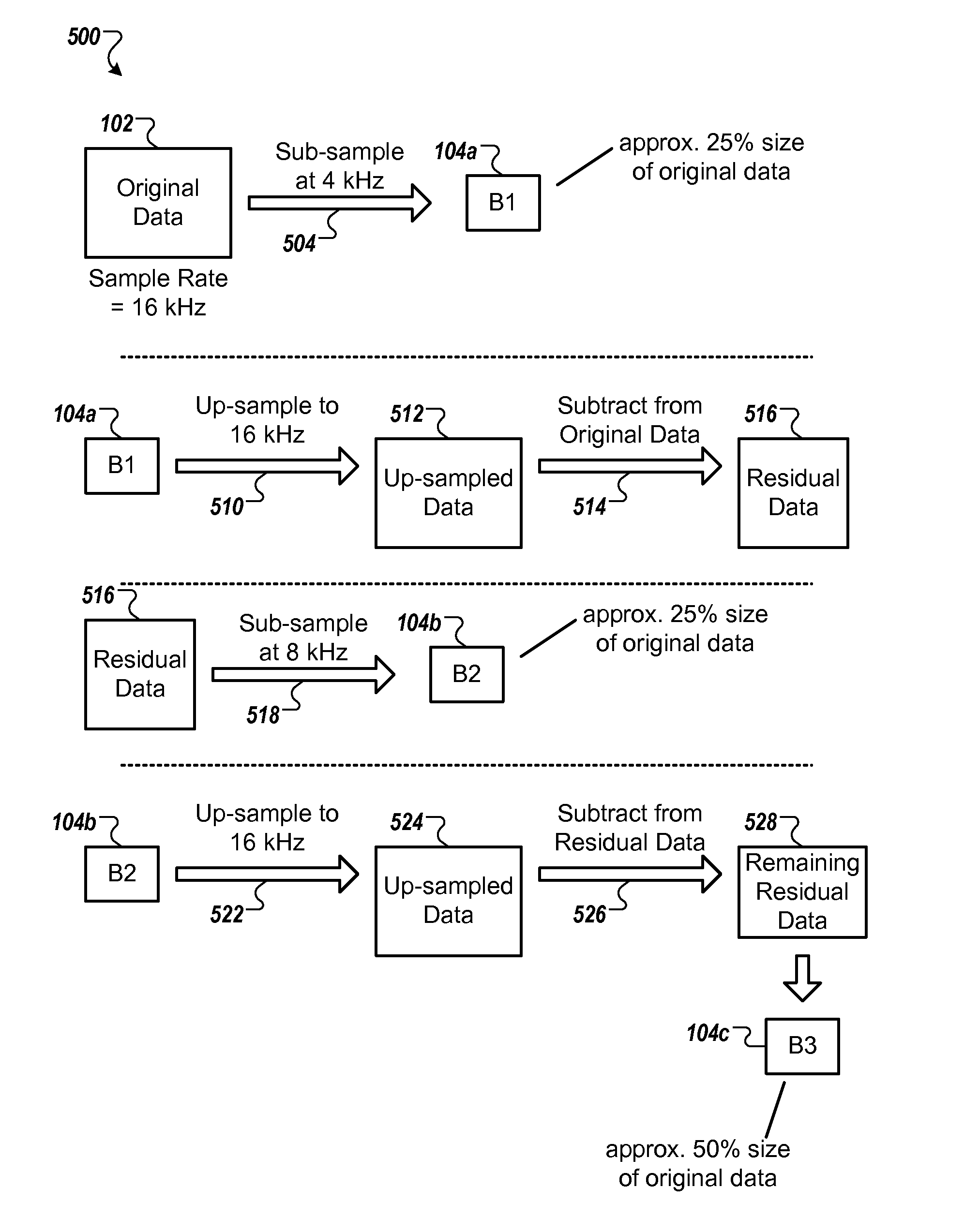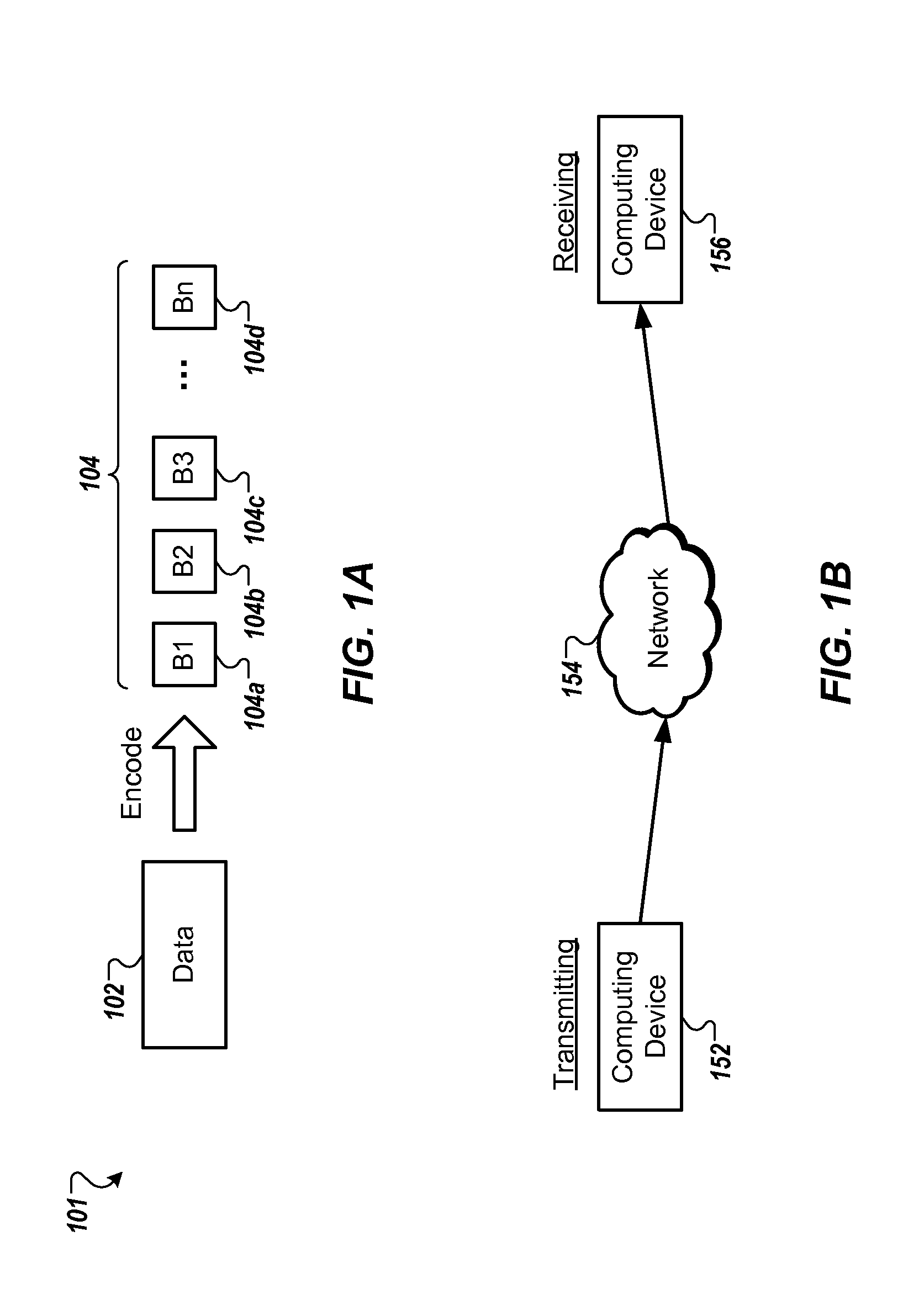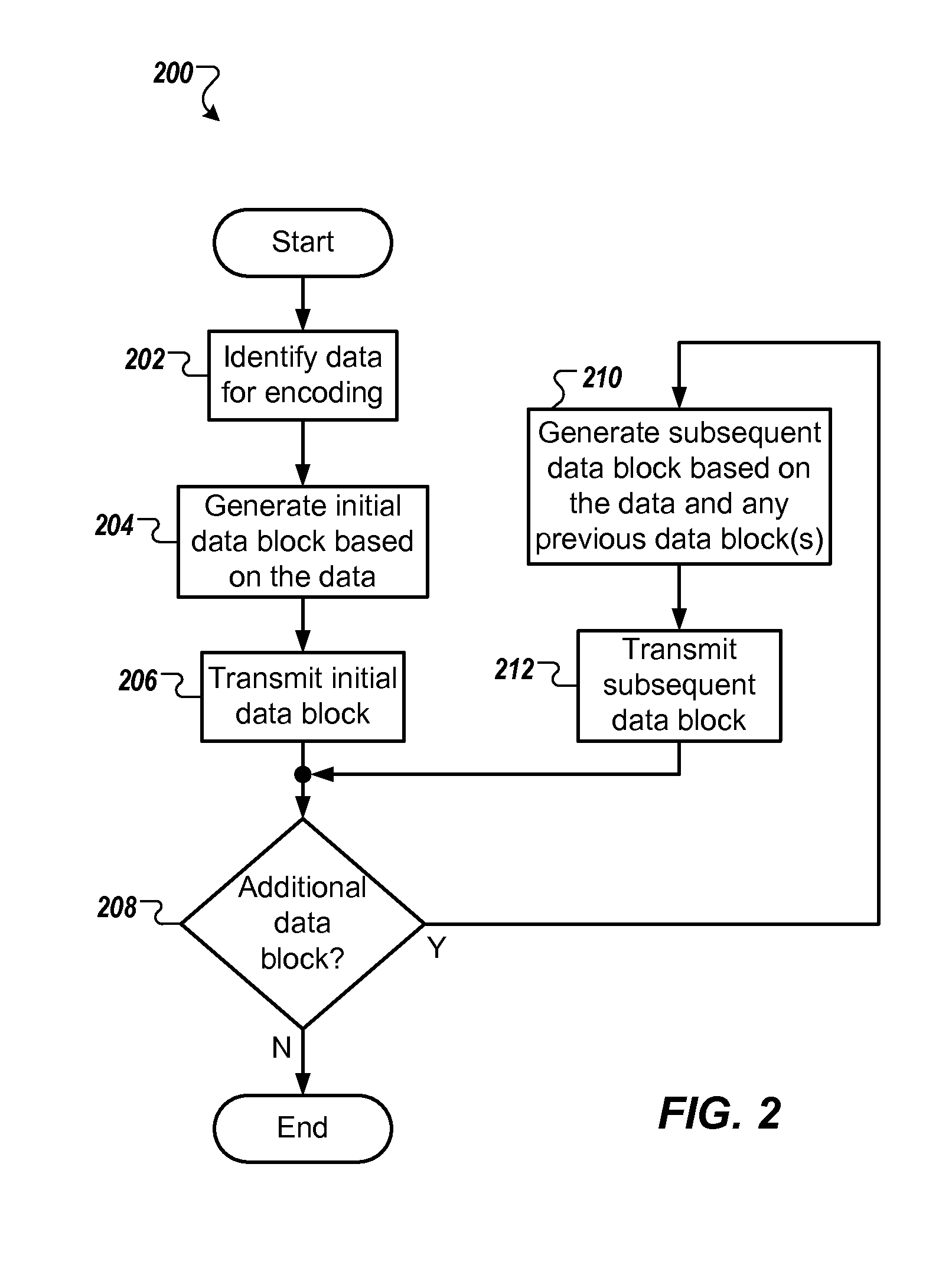[0004]According to one innovative aspect of the
subject matter described in this specification, a user can utilize a
voice search application on a
mobile device (e.g., a
mobile phone) to request information verbally regarding a topic of interest. For example, the user is a passenger in a car, driving with their spouse, and they are talking about where to spend time on their next vacation. The user would like information regarding the best beaches in the United States. The user, interacting with the
voice search application on their mobile phone, speaks the words “best beaches in the United States” into the
microphone on their mobile phone. The user expects the results of the voice search almost immediately. The mobile phone can transmit the input speech using a mobile communications network (the same network used to place and receive phone calls) to a
server provided by the mobile communication
service provider. The
server can recognize the input speech, run a
search engine using the recognized
speech input and provide the search results to the user on their mobile phone. The mobile phone can display the search results on the display screen of the mobile phone as a
list of
web site links the user can visit to provide the requested information. However, as the user is traveling in the car the quality and speed of the mobile communications network can vary affecting the time between the spoken words and the search results. The mobile phone can provide the input speech to the
server as a series of blocks where each block provides additional incremental data regarding the input speech. A
speech recognition application on the server can attempt to recognize the input speech after receiving each block of data. Once the
speech recognition application is confident it has successfully recognized the input speech it no longer needs to receive and process subsequent data blocks of input speech from the mobile phone. Therefore, the user can receive the results of the voice search more quickly than if the mobile phone sent the entire input speech to the server.
[0005]In general, innovative aspects of the
subject matter described in this specification may be embodied in methods that include the actions of retrieving a
digital audio signal, processing the
digital audio signal to generate a first sub-set of data, the first sub-set of data defining a first portion of the
digital audio signal, transmitting the first sub-set of data for generation of a reconstructed
audio signal, the reconstructed audio signal having a fidelity relative to the
digital signal, processing the digital audio signal to generate a second sub-set of data and a third sub-set of data, the second sub-set of data defining a second portion of the digital audio signal and comprising data that is different than data of the first sub-set of data, and the third sub-set of data defining a third portion of the digital audio signal and comprising data that is different than data of the first and second sub-sets of data, comparing a priority of the second sub-set of data to a priority of the third sub-set of data, and transmitting, based on the comparing, one of the second sub-set of data and the third sub-set of data over the network for improving the fidelity of the reconstructed signal. Other implementations of this aspect include corresponding systems, apparatus, and computer programs, configured to perform the actions of the methods, encoded on computer storage devices.
[0008]These and other implementations may each optionally include one or more of the following features. For instance, in some implementations, the second sub-set of data includes more data than the first sub-set of data; the actions further include: receiving the other of the second sub-set of data and the third sub-set of data, and processing the other of the second sub-set of data and the third sub-set of data to further improve the fidelity of the reconstructed audio signal; the third sub-set of data includes more data than each of the second sub-set of data and the first sub-set of data; processing the first sub-set of data includes up-sampling data of the first data sub-set at an original sampling rate of the
data set to provide first up-sampled data, the reconstructed signal being generated based on the first up-sampled data, and the first data sub-set having been generated using a first sampling rate that is less than the original sampling rate, wherein processing one of the second sub-set of data and the third sub-set of data comprises up-sampling data of the one of the second sub-set of data and the third sub-set of data at the original sampling rate to provide second up-sampled data, the second up-sampled data being added to the reconstructed audio signal to improve the fidelity of the reconstructed audio signal, and the one of the second sub-set of data and the third sub-set of data having been generated using a second sampling rate that is less than the original sampling rate and that is greater than the first sampling rate, the actions further include: up-sampling data of the other of the second sub-set of data and the third sub-set of data at the original sampling rate to provide third up-sampled data, and adding the third up-sampled data to the reconstructed audio signal to further improve the fidelity of the reconstructed audio signal; the first sub-set of data is generated by extracting a first bit of each sample of data of the digital audio signal to provide first extracted data, the first extracted data defining the first sub-set of data and the first bit being determined based on a bit-depth, the second sub-set of data is generated by extracting a second bit of each sample of data of the digital audio signal to provide second extracted data, the second extracted data defining the second sub-set of data and the second bit being determined based on the bit-depth; the actions further include: determining that the fidelity of the reconstructed audio signal has achieved a threshold fidelity, generating a signal, and transmitting the signal over a network for ceasing transmission of subsequent sub-sets of data; and the actions further include decompressing the first sub-set of data and the one of the second sub-set of data and third sub-set of data.
 Login to View More
Login to View More  Login to View More
Login to View More 


